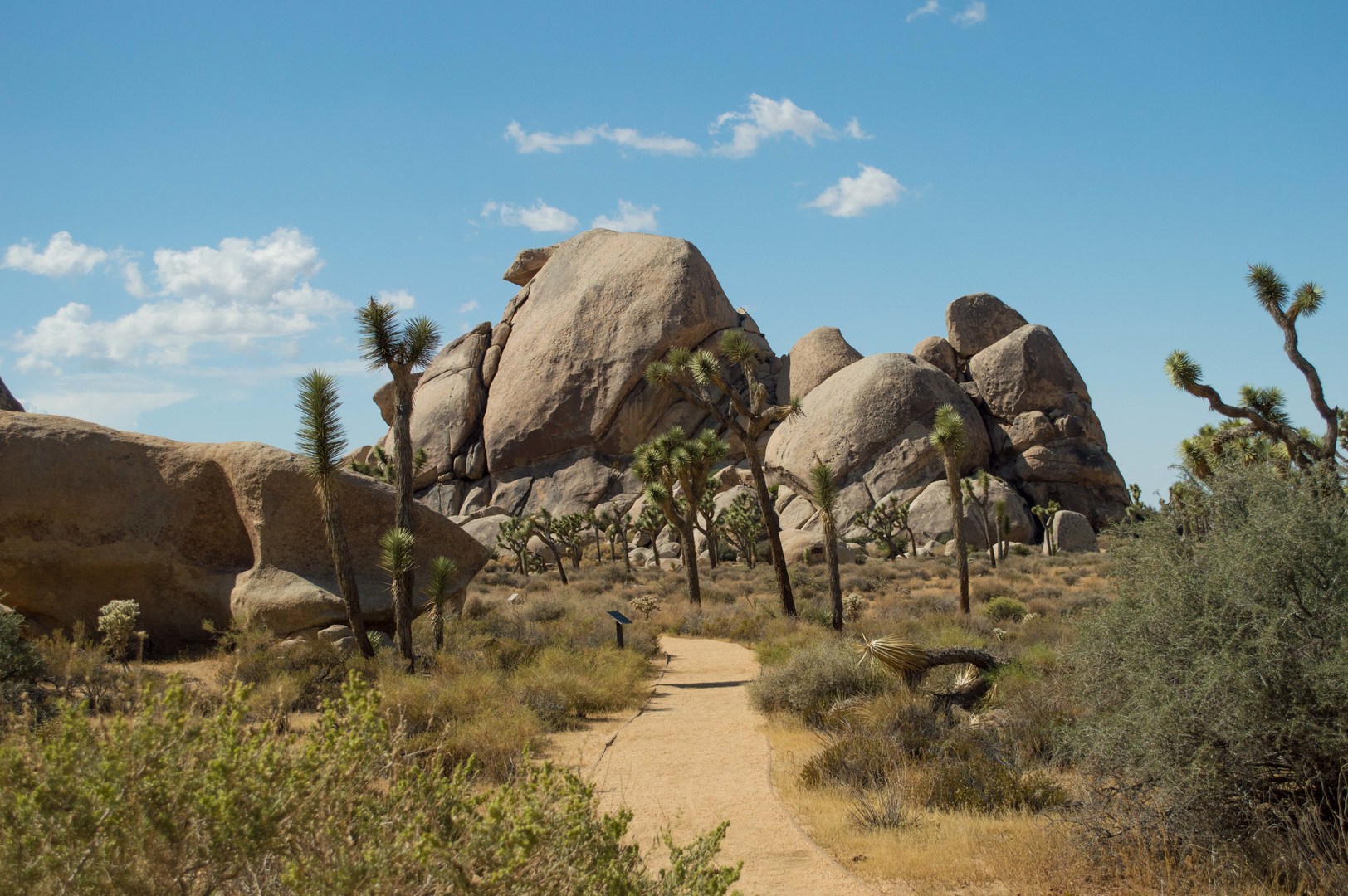Cap Rock Nature Trail is a 0.3-mile loop that winds through rock formations in Joshua Tree National Park. Signs along the path explain the geology and flora of the region.
Along the trail you may notice seemingly random stacks and piles of boulders. The rock piles in Joshua Tree began underground; magma cooling into granite rose toward the earth's surface and into the cracks of the existing rock (the Pinto Gneiss formation). Groundwater filtered downward into the cracks, and centuries of erosion sculpted the rocks into their rounder shapes. Erosion on the surface from flash floods, wind, and rain wore the earth down around these already fully-formed piles.
Although the desert may seem empty at first sight, it is home to many unique species. For example, Joshua Trees are only found in parts of California, Nevada, and Arizona. Other plants found in the region include peachthorne, desert almonds, Mormon tea, mojave yucca, juniper, and a variety of annual flowers. Animals include bighorn sheep, roadrunners, quail, desert tortoises, and a variety of lizards.



















Comments
Sign In and share them.